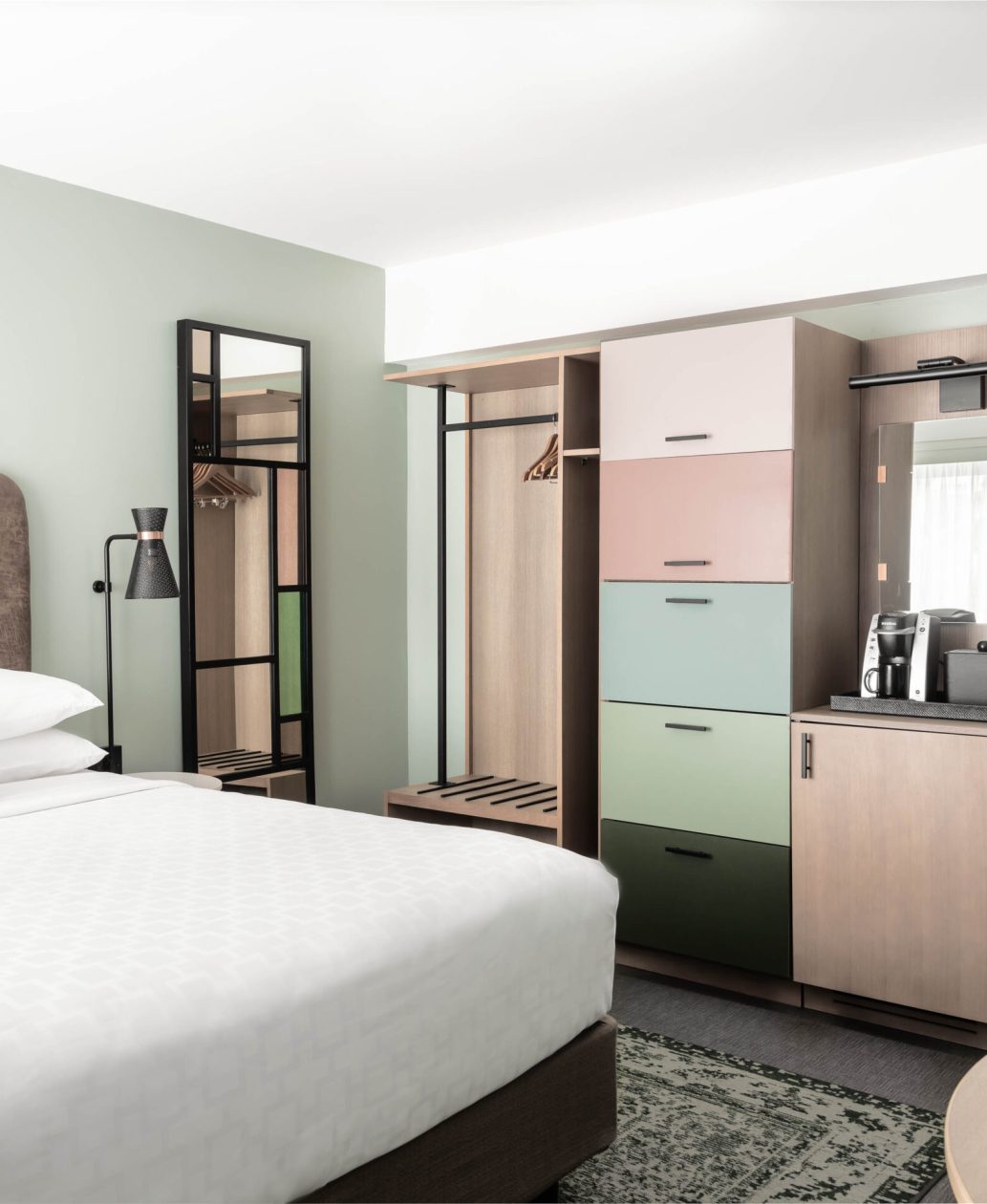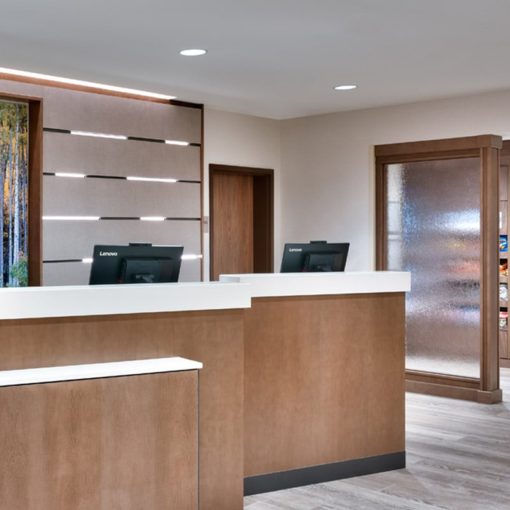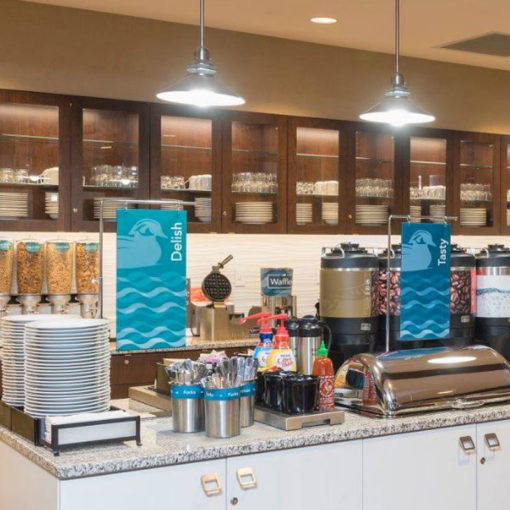How to Make Just-In-Time (JIT) Delivery of Hotel FF&E Work

If you’re a hotelier familiar with the just-in-time (JIT) delivery process, you may know that many owners and operators choose this option to save money during their hotel FF&E projects. But did you also know that JIT can facilitate a smoother and more coordinated renovation or new construction project? Read on to learn about the JIT delivery process and the difference it can make.
What Is Just-In-Time (JIT) Delivery?
JIT is an inventory strategy centered around the idea of keeping only what you need on-hand. In a hotel context, the JIT FF&E delivery process plans for product to arrive shortly before you need it rather than collecting in large quantities ahead of time. JIT for hotel FF&E can reduce complexity while increasing the project team’s efficiency as they install product.
Without a JIT delivery system in place, your FF&E will generally need to arrive farther in advance and be less aligned with your project timeline. Without JIT, storage, inventory management, and additional transportation are often necessary for the FF&E your team isn’t ready to install. In addition to paying more for these services, without the strategic coordination of JIT, you run the risk of needing product that has yet to be delivered, thus stalling your project.
In contrast, with JIT delivery, your freight carriers ship specific and timely product to your hotel in smaller, pulsed deliveries when the team is ready for installation.
The Benefits of JIT Deliveries for Hotel FF&E
Aside from reduced costs and increased efficiency, using the JIT process for hotel FF&E deliveries has many advantages. For example, with JIT, it’s easier to check your smaller received inventories for damages or missing items. You’ll also be able to have a smaller staging area and less storage space since the FF&E that arrives won’t sit long before being installed.
With JIT, hotel FF&E may only offload from a truck once. This helps minimize damage that can occur from additional handling. Without the JIT process, after unloading into storage, product may then need to again load onto a truck and then offload again at the property. Every time you touch the product, it raises the likelihood of breakage or mishandling. Not only does this increase the number of FF&E replacements and claims that must occur, but also any breakage that occurs after the original receipt of product is no longer the responsibility of the manufacturer or initial freight carrier.
Furthermore, planning JIT deliveries sequentially makes assessing the labor needs for receiving and installing the product more manageable. JIT deliveries can also be smaller, making receiving, unloading, staging, and installation faster and more efficient with each load.

How to Make Just-In-Time (JIT) Delivery of Hotel FF&E Work
JIT delivery of hotel FF&E is a worthwhile strategy for hoteliers to consider. Below are five ways to make the JIT process work for the hotel FF&E in your next project.
#1: Ensure team communication.
To make JIT delivery work, communication and collaboration are critical throughout the project. For example, the procurement team needs to know the general contractor’s (GC) timeline and any updates or delays in real-time so they can adjust the timing and sequencing of the JIT deliveries accordingly. Changes will happen, and the JIT delivery schedule is more sensitive to these fluctuations than if product were just heading to storage. But with active oversight and planning on the part of your procurement team and GC, timely communication allows the team to adjust when changes do occur.
#2: Establish roles and realistic expectations.
A proactive procurement firm such as Innvision ensures that clear roles are defined within the project team for all phases. These roles must then integrate into the JIT delivery plan. Everyone should know who is responsible for what and each person must always have the latest schedule.
#3: Plan ahead.
Depending on the project, installations will typically follow a strategic plan. For example, if you’re renovating a hotel that will remain open, you’ll want to coordinate and start in areas or floors that have taken down rooms from inventory. For new construction, installations may follow a top-down approach. Whatever the case, building a detailed receiving and installation plan helps map the contents of each JIT delivery so the property has the right product just before it is needed for installation.
#4: Prepare for JIT deliveries.
It is up to the onsite project team to plan so that when trucks arrive, the unloading area is clear and unobstructed, designated storage and staging areas are ready, all necessary equipment for unloading (forklifts, cranes, team, etc.) is present, and the site is fully prepped. This also helps to protect and preserve your products when they arrive. Your procurement firm’s guidance can help facilitate your jobsite readiness.
#5: Work with hospitality-specific professionals.
With JIT deliveries, timing and sequencing are everything. When working with a professional procurement team that’s experienced in hospitality, they will educate you on the requirements and processes necessary for successful JIT deliveries. This will help you ensure that your receiving team is ready and will follow the right procedures.
A high-quality procurement provider will also collaborate with the GC to know where they are in the construction or renovation so that the JIT process can correspond with their timeline and be adjusted as necessary due to construction delays. With accurate and honest information from the GC and systems in place to confirm readiness, JIT delivery of FF&E can occur without a hitch.
Innvision is a trusted partner, here to make your life easier through our expertise in JIT delivery of hotel FF&E. If you’re ready to see how Innvision can make your hotel renovation or new construction as smooth, efficient, and cost-effective as possible, contact us today!



